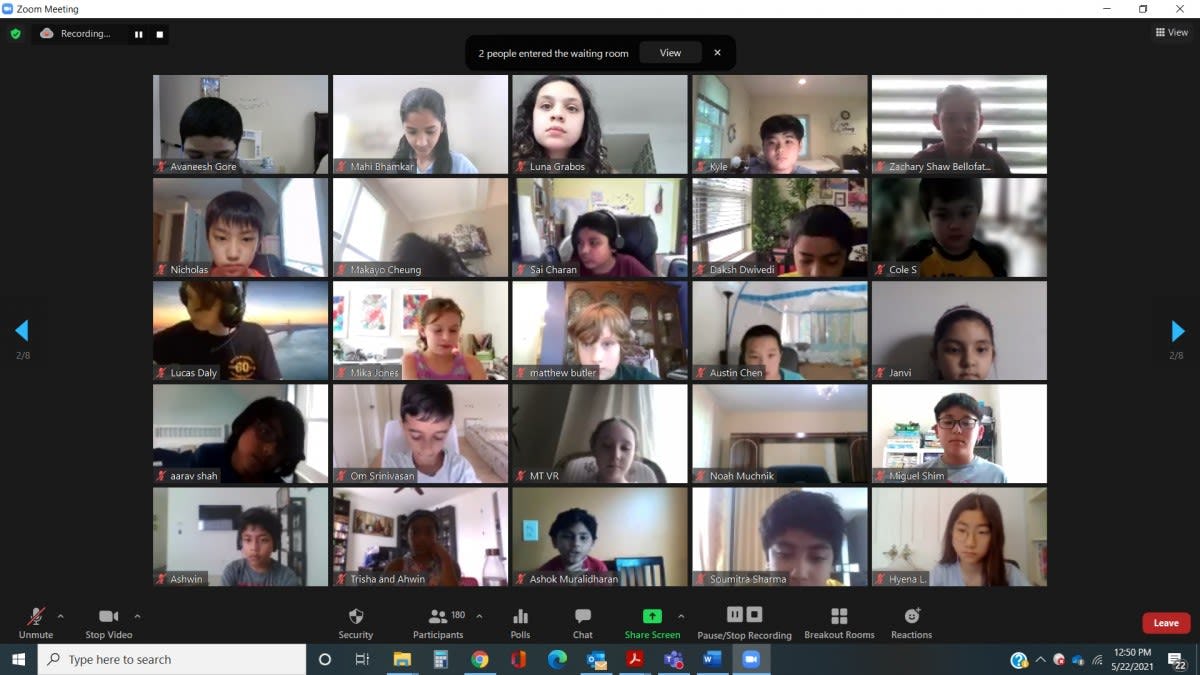Stimulating Enthusiasm and a Love For Mathematics, From a Distance
The 2021 Stevens Math Olympiad was attended by more than 625 young mathematics enthusiasts grades 3-12
More than 625 young mathematics enthusiasts, grades 3-12, attended the 2021 Stevens Mathematical Olympiad. This annual event focuses on building excitement for math among school-aged students and is typically held every year at the Hoboken, New Jersey campus of Stevens Institute of Technology. In 2020, it was canceled due to the COVID-19 pandemic. This year, the Olympiad returned in a virtual format.
“We knew that we wanted the Olympiad to return in 2021, but we also knew that hosting it on campus was premature, so a virtual format was the natural solution,” said Jan Cannizzo, member of the Stevens Mathematical Olympiad Committee and faculty member of the Department of Mathematical Sciences. “Although a virtual math competition has some drawbacks, it turns out to have some advantages too: We had record participation, and there were even students who joined us from other countries.”
The program opened with remarks by Stevens’ President, Nariman Farvardin, and Pavel Dubovski, chair of the Stevens Mathematical Olympiad Committee and faculty member of the Department of Mathematical Sciences. The event then moved to the examination portion.
“Students from grades 3 to 12 were offered 15 mathematical problems of different levels of difficulty, from regular level to really difficult, “ Dubovski said. “On average, the students could solve half of the problems, which looks reasonable.”
Like in past Olympiads, eager young minds solved challenging math problems during the exam portion; this time from home offices, living rooms, and kitchen tables. Throughout the testing phase, faculty, staff, and student volunteers were available to guide critical thinking and clarify challenging concepts.
The online format allowed students to automatically receive their scores and a certificate of completion upon finishing the exam. Participants also received the average scores for each grade level in an email to give the students a sense of their performance relative to others.
The Olympiad concluded with the keynote lecture by Andrey Nikolaev, a Department of Mathematical Sciences faculty member.
Both students and parents appreciated the return of the Olympiad in 2021.
“Thank you for putting this together! I shared your Olympiad with my high school mathematics students and also had my daughter participate,” said the parent of a participant who is a high school math teacher.
Solving picture hanging puzzles with math
After the exam and a short break, participants returned to see a lecture by Nikolaev about picture hanging puzzles.
As a lifelong math enthusiast, Nikolaev knows what it is like to compete in math Olympiads. He participated in many math competitions as a student in his home country, Russia, and was a successful national medalist. Today, he teaches mathematical sciences at Stevens and is co-director of the Stevens Math Circle initiative. In addition to giving lectures to Stevens students in the classroom, Nikolaev enjoys explaining abstract mathematics to any audience willing to listen.
Nikolaev began his lecture on a whiteboard. He drew a picture of a frame hanging on the wall from a single nail. After the foundation of the puzzle was set, he asked the participants to imagine the image in real life.
“If the nail is removed, the picture frame will fall,” he said.
Then he draws a picture frame hanging from two nails and explains that the picture frame would not fall to the ground by removing one nail but hang askew instead. Then he posed the question to spark the curiosity of the students: How does the picture frame hanging by two nails fall when removing only one nail?
Using props, which included boards with nails and a rope, he demonstrates several ways that this is achievable. But this wouldn’t be a math event if he didn’t explain how to figure out the puzzle using mathematical equations.
On the whiteboard, he wrote equations for two nails … then three … four … and more. He walked through the logic and construct of each of the equations, explaining that it was mathematically possible to figure out the puzzle for dozens, even hundreds of nails.
“I chose this topic for the lecture because it illustrates vividly how complex mathematics arises from a straightforward setup and simple questions,” Nikolaev said. In the end, the 2021 Stevens Math Olympiad achieved key aims of stimulating enthusiasm and a love for mathematics, introducing important mathematical concepts to students, and strengthening mathematical intuition and creativity.
In the case of Nikolaev's lecture, it helped spark a flurry of curious questions from students. One asked about solving the picture hanging puzzle mathematically for negative nails. Building upon that concept, others asked about fractional nails, complex nails, and imaginary nails.
“It was an uplifting experience to see so much interest from so many participants,” Nikolaev said. “I had fun, and I hope students did too.”
In a survey at the end of the conclusion of the Olympiad, an attendee said, “I think this is a great program to introduce kids to greater math problems as well as sparking an interest in Stevens.”
“This annual event assists in attracting more students to Stevens and serves the interests of many residents of NJ and NY,” said Dubovski. “We expect that next year the Olympiad will be held in the regular format, and we'll be able to greet all the participants and their parents on our beautiful Stevens campus.”
Learn more about math at Stevens:


